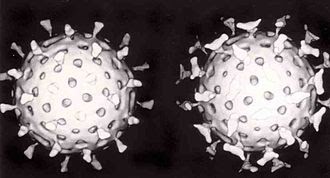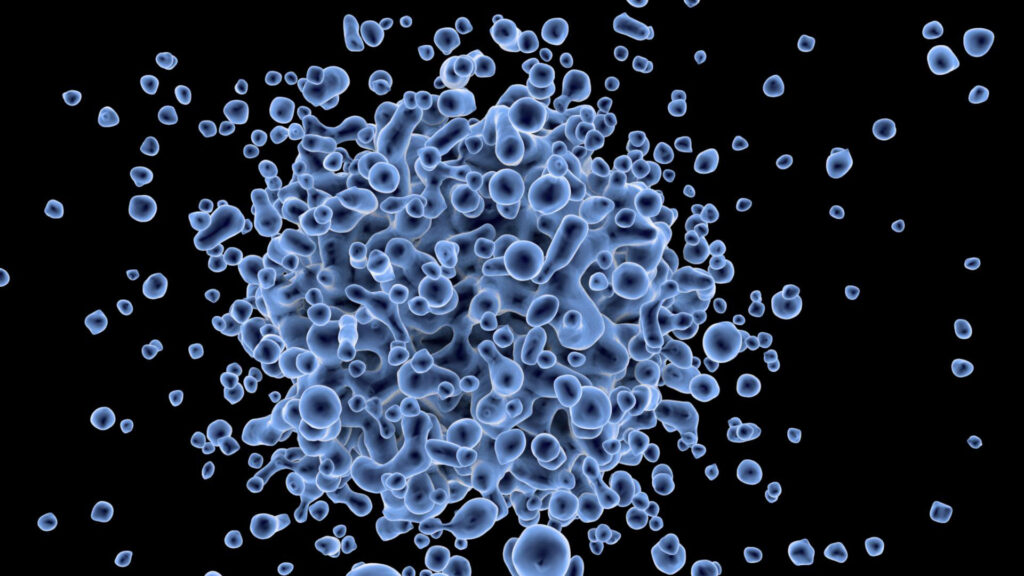Imagine it is the year 1985. Someone out there writing a piece of science fiction talks about how the world is troubled by a strange disease in the future. It has a plot centring around an apocalyptic event of epic proportions. Well, it’s 2020, and we live in such strange times indeed. The world is plagued by the novel Coronavirus, as researchers rush to find cures, vaccines, anything to stop the widespread hold of the disease. This brings the question of ‘How do we fight viruses?’ into popular consciousness.
What are viruses? Firstly, an interesting thing that we need to think about is, are they living or non-living? That is complicated. They are, well, neither living nor non-living. That’s a dilemma, isn’t it? How would you define something as living? Living beings are those which grow and develop, use energy, reproduce, are made of cells (science jargon: very small closed units that are the building blocks of life), respond to its environment and adapt. Viruses do none of these activities when it is outside a cell. In fact, they can be frozen at very low temperatures, unfrozen and then ‘used’. Not something we could do with humans (yet). But here’s the scary part. When inside a host cell, they ‘switch on’ and become alive performing all activities one would expect of the living.
Viruses are really tiny particles at the ‘edge of life’. They are smaller than bacteria, and if you want numbers, they lie between 20-300 nm (1 nm being 1/10,000,000 cm). They are made of nucleic acid (science jargon: molecules that literally are the monarchs of life) and proteins (science jargon: molecules that perform many functions, including being the building material of life). The nucleic acid is covered by a capsid, almost like a hollow ball with stuff inside. The hollow ball or capsid in this case is made with proteins.
Index
What do Viruses do to a cell?
Viruses in the cellular level essentially go through six steps:
- Attachment:
The virus has some specific binding proteins on its capsid that bind with (join with) certain receptors (again proteins) on the surface of the host cell. How specific the viral binding protein is will decide the variety of species the virus can affect. After attachment usually the cell membrane (science jargon: a covering that surrounds all cells) of the host cell fuses together with the viral membrane forming a ‘highway’ for the virus to enter the host cell. - Penetration:
In this step, the virus enters the cell. If membrane fusion doesn’t occur (typically in plants and fungi as they have an additional covering, known as the cell wall which is thicker than the cell membrane) the virus enters the cell by ‘making holes’. - Uncoating:
Following penetration of the virus into the cell, the time for the viral nucleic acid has dawned. For the nucleic acid to carry out its activity the capsid is removed. In some viruses there exist mechanisms that inject the nucleic acid across the cell membrane hence not requiring the virus to cross the cell membrane. - Replication:
Once active, the nucleic acid of the virus produces mRNA (science jargon: these are molecules which are essentially the instructions that are followed to make proteins. Think of them as middlemen for instruction sent by the nucleic acid. ‘m’- literally stands for messenger). The virus takes advantage of existing cell structures to its advantage. The host cell is bamboozled in a sense. It follows the instructions of the viral mRNA producing viral proteins. Not a delicious recipe for sure. The ‘monarch’ of the host cell has been overthrown by the incoming ‘dictator’ of the virus. The virus proteins are produced at very fast rates. Hence viruses are sometimes said to ‘start factories’ in the cells they infect, with the viral nucleic acid as very strict managers. Meanwhile the nucleic acid also gets busy making copies of itself. - Assembly:
The large number of proteins and nucleic acid are assembled into new viruses. An army of viruses. Each virus ready to take over new cells in the name of virus freedom if you might say so. - Release:
The end of the host cell has drawn near. Let’s try to understand what happens to the cell through a ‘thought experiment’. Imagine you have a balloon filled with water and a nail. Burst the balloon with the nail. Cell lysis is a similar process at the cellular level. The virus initiates cell lysis perforating the cell covering, releasing all the new viruses out of the cell. They end up infecting new cells that are near the original host cell. And what of the original host cell? All of its contents are now lost. Its identity of a cell is lost as it has no boundary. It dies a cruel death.
The cycle repeats after this. Viruses are like robots, machines and very efficient factories. Something scary indeed. And as the number of virus entities increase, the number of cells dying rises, resulting in poor health. Below is an image showing a range of viruses that affect humans, and the regions in the human body they most affect.
How do we fight viruses?
‘We’ could be defined in two ways in this context. One, how our body copes with the viral infection and the other, how our society by and large has developed modern medicine which fights with viruses and their infection. Let’s look at it from both ways shall we.
The war on the inside
Our body has these cells called white blood cells (WBCs) which serve as our soldiers on the cellular battlefield. There are molecules which are produced by WBCs known as antibodies which are specific to a particular virus and bind to their surface preventing them from attaching to the host cell and bringing about cellular death. As shown in the image below, the virus on the right has antibodies on it. One can clearly see that the virus on the right will have lesser binding sites now and has a lesser chance of bringing about infection.

Another function of the antibodies is ‘clumping’ the viruses together forming a large mass. These large masses are recognized by some of our WBCs which then eat up the viruses as if it is a juicy treat. Further, there are these immune cells called T-cells, which essentially are like ‘scanners’. They ‘scan’ the surface of a cell searching for attached viral particles. If such particles are discovered, Killer T-cells (another kind of immune cell) destroy the host cell preventing further proliferation of the virus. Another important molecule involved is known as interferon, which brings about the death of the host cell and its close neighbors. This sacrifice helps stop the spread of the viruses across our system. Interferon is given artificially as a medicine during antiviral therapy as well.
Medicine, Anti-Virals, and Vaccines
You might notice something with the above defence mechanisms. Antibodies are, well, the only molecule that detects viruses before they’ve penetrated the walls of the castle of the cell. The way vaccines are designed is such that they give the human body a taste of the viral-protein structure, so that the immune system may design the specific antibodies. And since we have the antibodies already in our body, we can fight viruses more effectively when the actual virus attacks.
Well, what do you do when the virus has already infected you and you didn’t take a vaccine because your parents were anti-vaxxers? Medicine is your answer. Specifically, antivirals. Antivirals work in 2-ways: a)preventing virus entry into the cell, and b)messing up the life of the virus once it is in the cell. Let’s look at particular antivirals and how they work in helping us during times of viral infection. Acyclovir and Zidovudine(also called AZT, which was the first antiviral approved for treatment of HIV) work by preventing the generation of mRNA by the viral nucleic acid. Rifampicin which is an antibiotic drug used in treating tuberculosis and leprosy has been seen to prevent viruses from completing the assembly phase. Zanamivir and Oseltamivir have been shown to prevent cell lysis by virus and hence release of more viruses in the body.
The reason viruses are so tough to fight is simply because of the ruthlessness with which it makes copies of itself using the host cellular machinery. It truly is the perfect killing machine, well sort of, as we can prevent infection through vaccines and fight infection through antivirals rendering the virus’s killing ability pointless. As we saw, there are various opportunities and cellular processes of the virus that we can use to disrupt the ‘life’ of the virus and win the fight between life and death.

